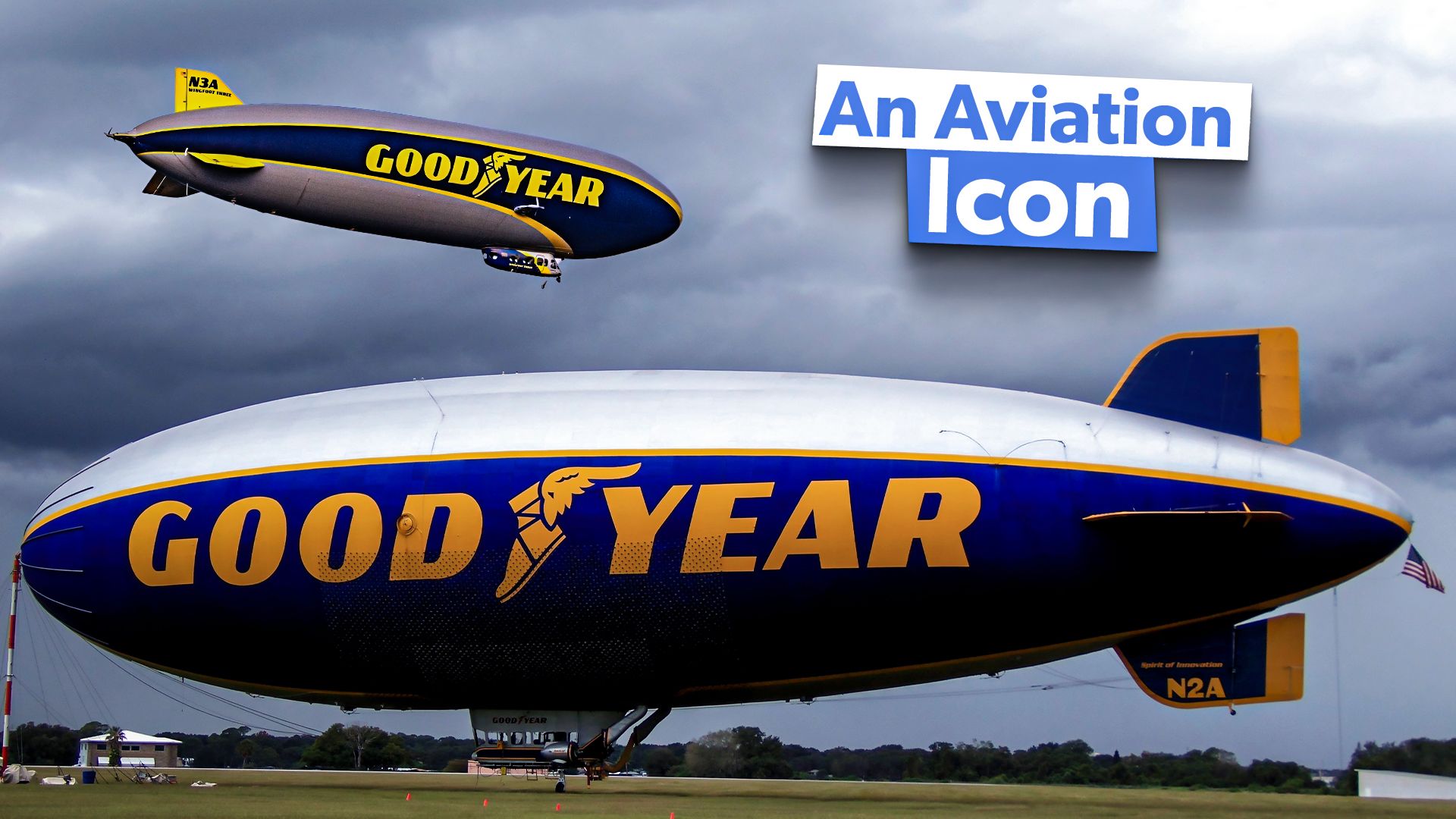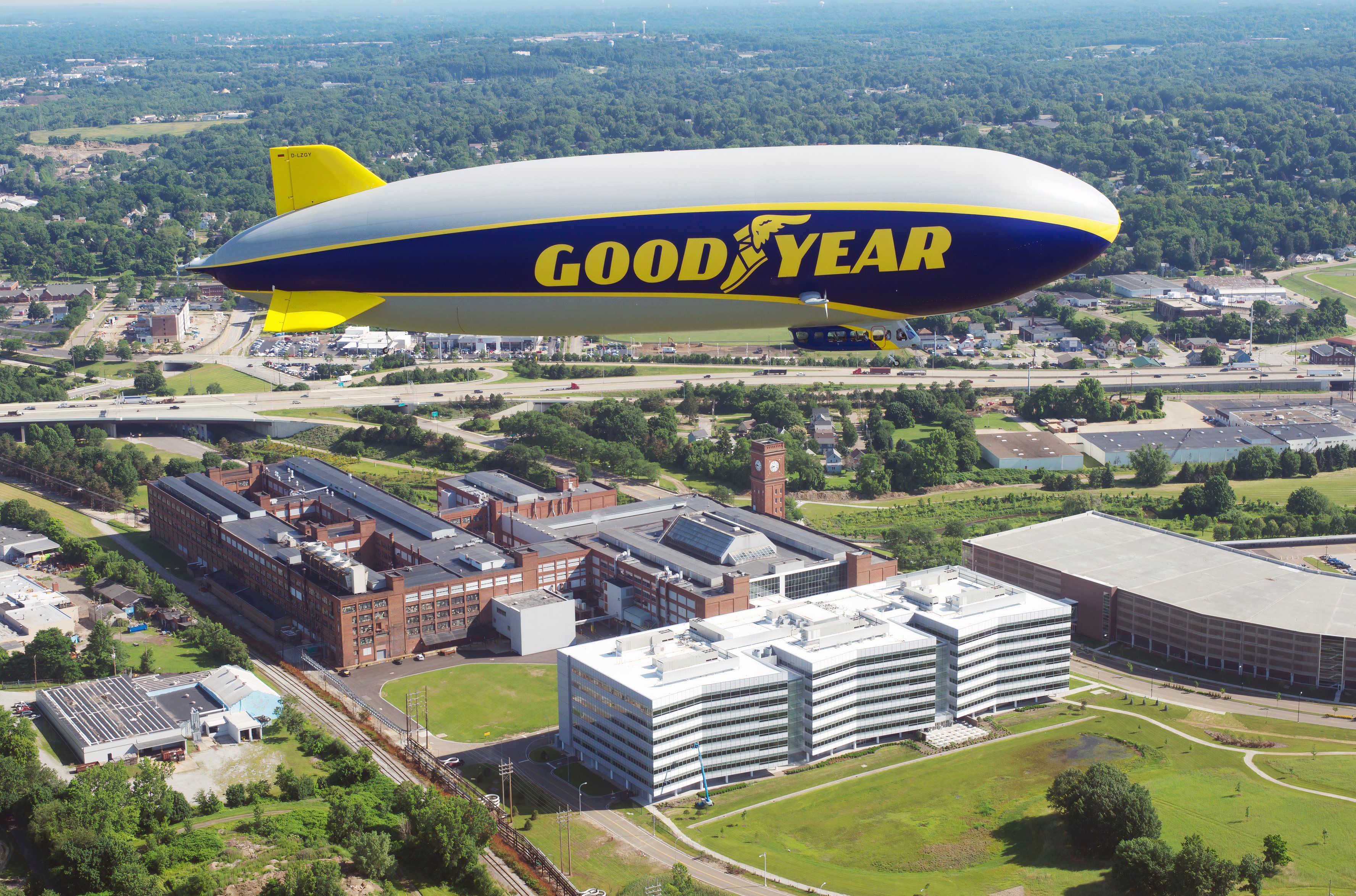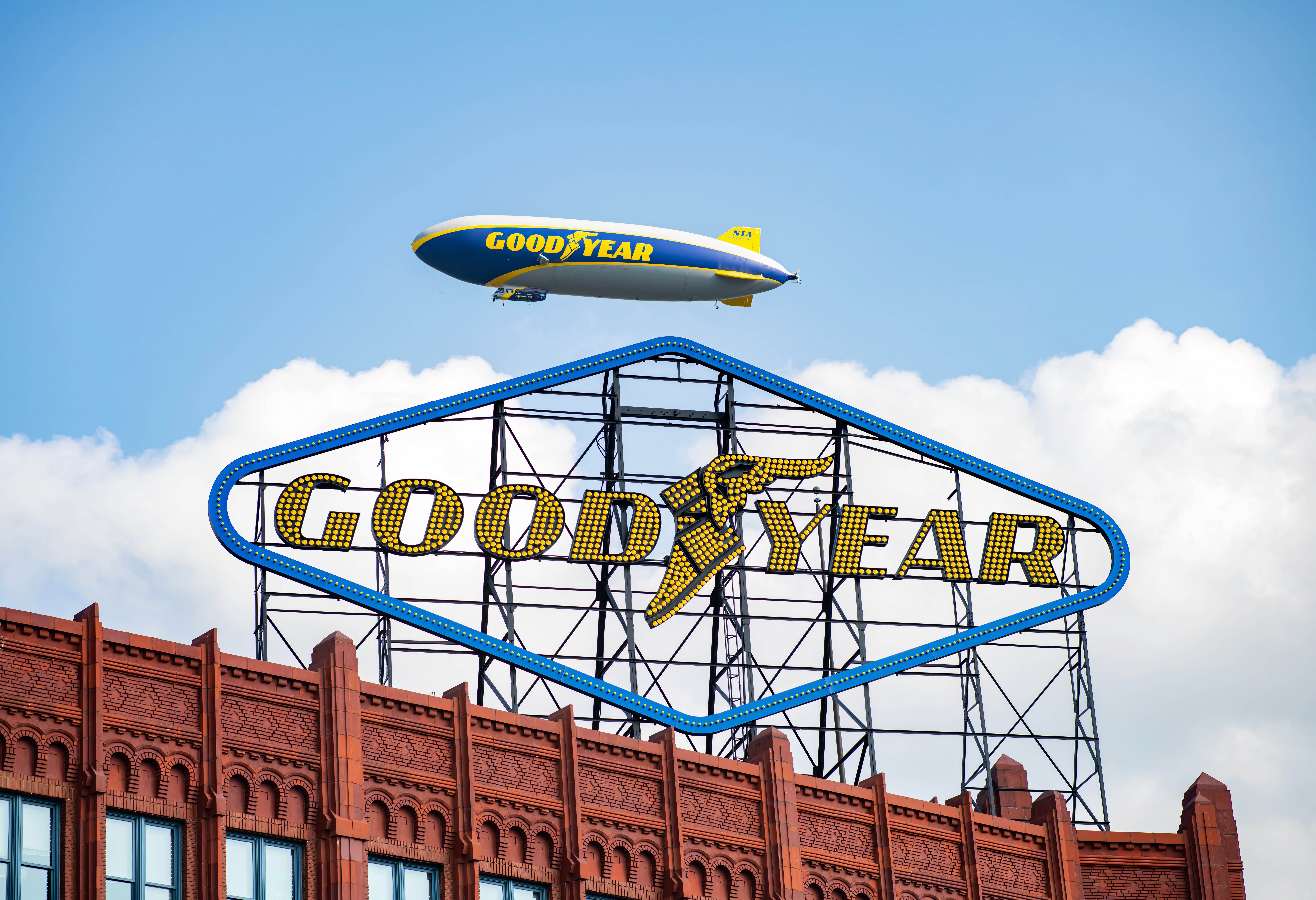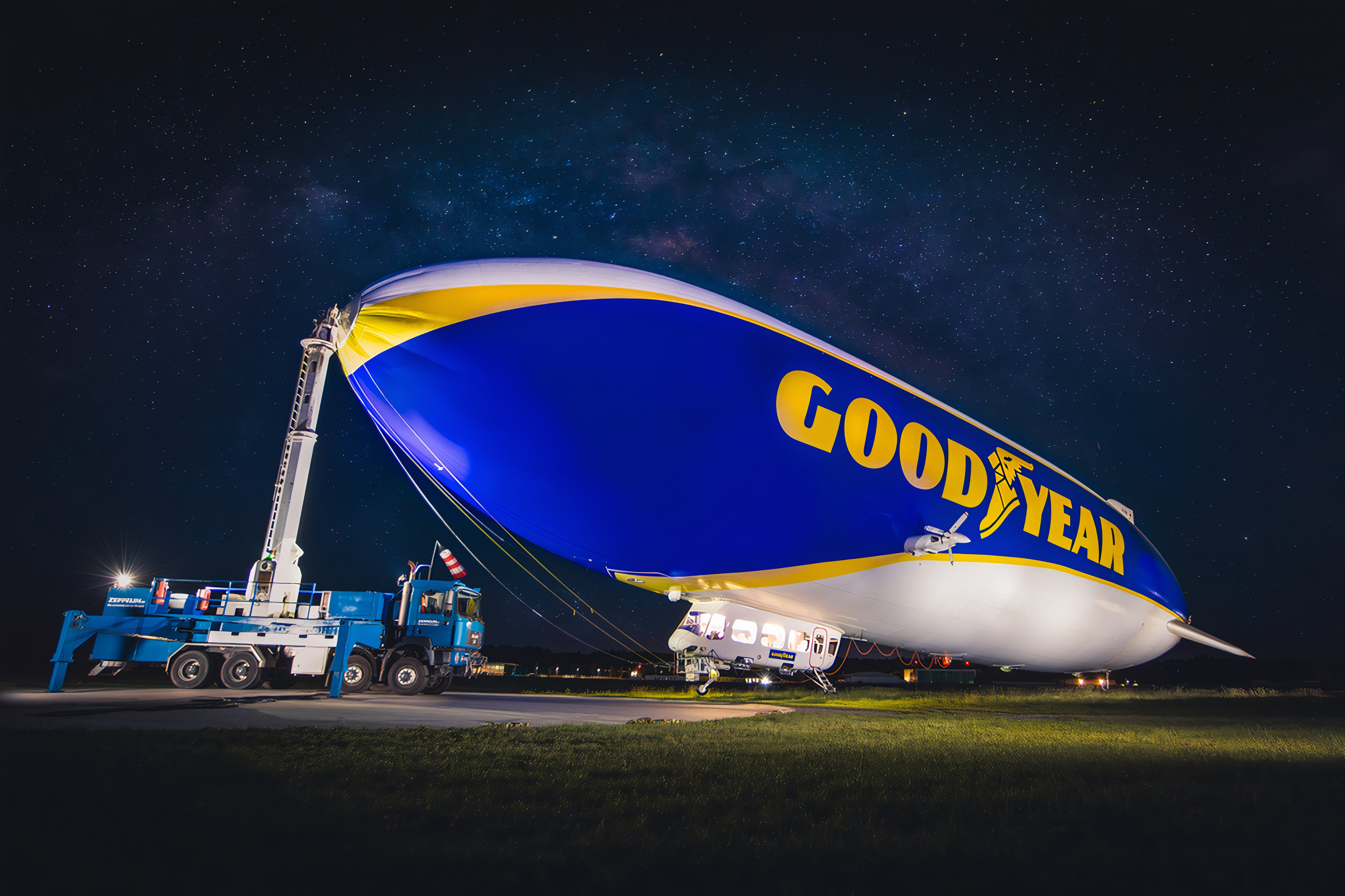Summary
- Goodyear blimps became popular advertising tools, kicking off in the 1920s.
- The blimps added illuminated signs in the 1930s to enhance their appeal.
- They gained fame for covering sporting events and movies, evolving into iconic US symbols.
During the Roaring ’20s, the Goodyear Tire and Rubber Company sought a way to expand its business. At the time, flying circuses were all the rage, with Barnstormers showing off their aerobatic skills throughout the United States. Besides newspapers, billboards along the roadside and banner-towing planes were the only way to inform people about your product.
Looking to advertise with the popular flying circuses, Akron, Ohio-headquartered Goodyear Tire and Rubber Company decided to build a fleet of airships (or dirigibles) for advertising purposes. At the same time as Goodyear was manufacturing its airships, lighter-than-air vehicles, the military was looking at ways to use them.
The Goodyear blimps made its maiden flight in 1925
Goodyear’s first civilian blimp was the ” Goodyear Type AD,” which the company named Pilgrim. It made its maiden flight in Akron, Ohio, on June 3, 1925. At first, Goodyear had planned to use the airship for sightseeing cruises but then discovered that it was the perfect advertising tool for significant outdoor events.
Using helium gas as a lifting agent, the Type AD was a conventional design with a gondola large enough for the crew and two passengers. A unique feature of the Type AD was that it carried its mooring mast, allowing the airship to land anywhere there was enough space.
Photo: Goodyear
Goodyear president Paul Litchfield saw the airships as yachts in the sky and decided to name the blimps after winners of the exclusive America’s Cup yacht race. With the exception of the “Spirit of Akron,” the tradition of naming the blimps after victorious yachts ended in 2005 with the Christening of Dennis Conners’ “Stars and Stripes.”
In the 1930s, Goodyear blimps were fitted with illuminated signs
In 1930, Goodyear took blimp advertising to the next level by placing Neon-O-Gram signs on both sides of the blimp. The Goodyear airship Defender became the first blimp to be fitted with a lighted sign that spells out the company name at night.
The sign was composed of ten removable six-foot by four-foot panels that each weighed 35 lbs. By 1940, Goodyear wanted to make its blimps more appealing, so it equipped each of its blimps with a record player, microphone, and loudspeakers to play recordings and send messages to the crowds below.
Photo: Goodyear
With America’s entry into WWII following the surprise December 7, 1941, Japanese attack on Pearl Harbor, Goodyear turned its attention to building aerial surveillance and early warning airships for the military.
Two years earlier, during the 1939 New York World’s Fair, RCA’s president, David Sarnoff, unveiled the world’s first commercially available television. During the war, RCA forgot about making televisions for a while and worked on building military radios and components for radar systems.
Goodyear blimps began covering sporting events
Following the war, RCA returned to making televisions, and by 1948, there were two million televisions in American homes. Companies soon realized the value of sponsoring television shows and sporting events. In the early 1950s, Goodyear realized that its blimps could advertise the company and generate revenue by providing aerial footage of events.
On January 1, 1955, the Goodyear blimp Enterprise V provided aerial footage of the Tournament of Roses Parade in Pasadena, California, using a camera and microwave transmitter provided by NBC. The networks loved the aerial views and began using Goodyear blimps to cover various events.
By the 1960s, nearly every home in America had a television, as the world was transitioning from black-and-white to color. Live sporting events were more popular than ever, with Goodyear blimps not only providing aerial views for the fans at home but also a spectacle for the people who were attending the events.
Now a common sight at American sporting events, Goodyear blimps began making cameo appearances in movies like the Beatles’s “Help” and beach party movies starring Frankie Avalon and Annette Funicello.
Two Goodyear blimps were used to cover the 1980 Baseball World Series between the Philadelphia Phillies and the Kansas City Royals. The Phillies emerged victorious in the best of seven games, beating the Royals 4-2. Everything went so well with the World Series coverage that Goodyear sent two blimps to California to televise the 1984 Los Angeles Summer Olympics.
The Goodyear blimp passenger policy
Despite initially intending to carry fare-paying passengers, Goodyear abandoned the idea but did carry corporate guests and press members. During the 36 years that Goodyear supplied tires for the IndyCar race series, the company had a tradition of giving the pole-winning car driver at the Indianapolis 500 a ride in one of its blimps before race day.
Photo: Goodyear
With Formula One and endurance races like the Le Mans 24-hour road race prevalent in Europe, the American tire manufacturer teamed with Deutsche Zeppelin-Reederei GmbH of Friedrichshafen, Germany, to build a European blimp. Unlike its American counterparts, when Wingfoot One is not covering European sporting events, it is regularly used for sightseeing trips around Germany.
General specifications and performance of the Goodyear Zeppelin NT airship
|
First flight |
2014 |
|
Overall length |
246.4 feet |
|
Maximum width |
64.79 feet |
|
Maximum envelope width |
46.45 feet |
|
Overall height |
57.57 feet |
|
Internal framework |
Aluminum and Carbon Fiber Trusses |
|
Envelope material |
Polyurethane, Polyester, and Tedlar film |
|
Envelope volume |
297,527 cubic feet |
|
Envelope life |
10 years+ |
|
Maximum weight without helium |
19,780 pounds |
|
Maximum speed |
73 miles per hour |
|
Gondola seating |
Up to 14 |
|
Gondola empty weight |
2,626 pounds |
|
Signage pixels |
12,384 |
|
Pixel density |
13.6 per square foot |
|
Static lift |
2,940 pounds |
|
Maximum dynamic lift |
1,102 pounds |
|
Total usable lift |
4,042 pounds |
|
Number of engines |
Three four-cylinder, 200-horsepower engines |
|
Endurance |
20 to 40 hours |
|
Noise level inside the gondola |
64 decibels |




